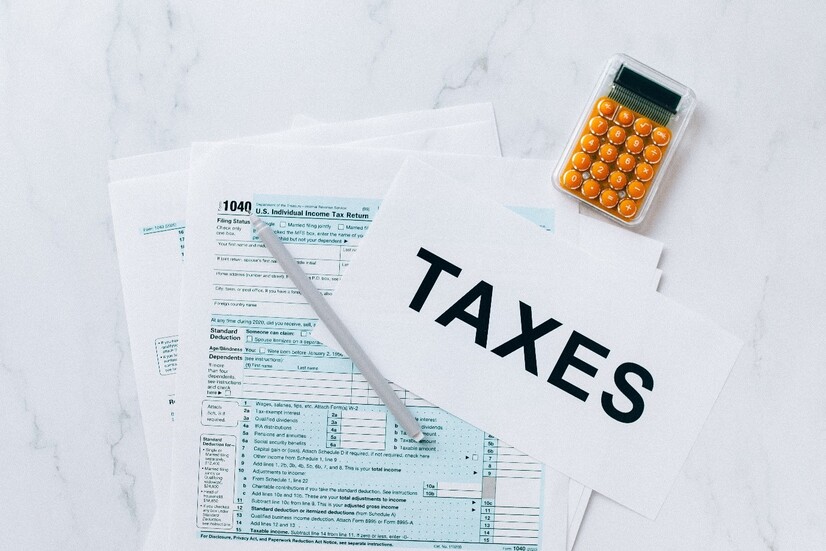6 Effective Tax Management and Planning Tips in 2023

Taxation is a crucial component of our economic existence. Like your prudent approach towards various expenses, such as everyday necessities and accommodations, you should also aspire to minimize your tax liability. The significance of tax planning strategies stems from the complex nature of the tax code. It can be quite challenging for novice taxpayers, who may encounter difficulty comprehending terminologies such as liabilities, deductions, and financial measures.
Exploring taxation and formulating tax planning strategies can yield advantages beyond mere tax reduction. Financial management strategies can help individuals and small enterprises enhance their financial efficacy, minimize their total capital expenditure, and augment their net income. This potential for vast savings should motivate you to equip yourself with practical tax management and cutting tips.
In this article, we will discuss six helpful strategies for tax planning and facilitate you in the taxation process. Let’s get on with it:
1. Form 8938: Filing Requirements and Inclusions
First, it’s imperative to understand Form 8938: Filing Requirements and Inclusions in depth. It outlines all the necessary information U.S. taxpayers need to know about disclosing their foreign assets to U.S. authorities. You must file Form 8938 and include the value of your designated overseas financial assets in your taxable income if the sum of their values is more than a particular threshold. Form 8938 thresholds differ by marital status, country of residence, and the location of the foreign financial assets.
If you are a single U.S. taxpayer and the value of your specified foreign financial assets is over $75,000 at any time throughout the year or over $50,000 on the last day of the tax year, you must file Form 8938. Specified foreign financial assets must be included in your tax calculations and reported on Form 8938 if you meet the reporting limits. Foreign stocks and securities, partnership interests, and bank accounts held in a foreign country are all examples of such assets. Ensure to peruse all the guidelines thoroughly and include all your eligible assets in your tax calculations to avoid being penalized.
2. Understand your tax bracket and plan accordingly
Knowing your tax bracket is one of the critical components of efficient tax administration and planning. The income amount subject to federal and state taxes depends on your tax bracket. By being aware of your tax bracket, you can tailor your strategies and effectively minimize your liabilities.
For instance, if you are liable to pay a higher tax, you might mull over deferring part of your income to the next year or lowering your taxable income by using tax-advantaged retirement funds like a traditional IRA or 401(k). On the other hand, if your tax bracket is lower, you may contemplate accelerating your expenses.
3. Maximize Deductions and Credits
You can intelligently reduce your taxable income and tax liability using available tax deductions and credits. In contrast to credits, which reduce your tax bill by a fixed percentage, deductions reduce your taxable income by a certain percentage. To minimize your tax liability, you must learn about and use all the deductions and credits you are entitled to.
Mortgage interest, property tax, state, and municipal tax, charity contributions, company expenses, and so on are all standard deductions. Earned income tax credit, the credit for higher education expenses, and the credit for using renewable energy sources are all possible tax credits. You can minimize your tax burden and keep more of your hard-earned money by studying the tax rules and taking full advantage of all allowable deductions and credits.
4. Maximize Your Retirement Contributions
Investing in a retirement account is an excellent long-term strategy because of the returns you’ll receive. You can minimize the income tax you owe in the year you contribute to a tax-advantaged retirement account such as a regular IRA or 401(k). A lot of money on taxes can also be saved, which can later be added to your retirement fund.
Traditional Individual Retirement Account (IRA) contribution limits for the tax year 2023 are $6,500 for those under age 50 and $7,500 for those 50 or older. For 2023, the 401(k) contribution limits are $19,500 for those under 50 and $26,000 for those 50 and beyond. Contributing as much as possible to your retirement account will help you save money, minimize your tax liability, and secure your financial future.
5. Consider Tax-Efficient Investment Strategies
Thinking about how your investments will affect your tax situation is crucial before diving in. Understanding the tax efficiency of various investment methods can maximize investment returns while minimizing tax liabilities. When you put money in a tax-advantaged account, like a Roth IRA or an HSA, it can grow tax-free and be withdrawn tax-free in retirement or for medical expenses that meet specific criteria. Municipal bonds issued by state and local governments are ordinarily exempt from federal income tax, making them another tax-wise option for investors.
Long-term investment holdings could be considered a second method due to reduced tax rates for long-term capital gains. Gains on investments held for less than a year are subject to a greater rate of ordinary income tax than gains on investments kept for more than a year. It is because they are subject to a lower capital gains tax rate. It is also possible to minimize your tax bill and increase your return on investment by carefully planning when to sell your investments.
6. Plan your charity strategically
Doing charity is a win-win situation. This action makes you feel good about yourself and the world by supporting causes you care about, and it can also help you save lump sum money by reducing your taxable income. Donating to qualified charities is typically tax-deductible, which allows you to reduce your taxable income and overall tax liability.
Donating appreciated assets, such as securities or real estate, directly to a qualified charity can provide additional tax benefits. By donating valuable assets, you can avoid paying capital gains taxes on the appreciation and be eligible to claim charitable deductions for your assets’ fair market value. It can save hefty amounts compared to selling an asset and donating its proceeds.
You can also contemplate “bunching” your charitable contributions by making loftier contributions in certain years to surpass the standard deduction threshold and maximize your deductions. A tax expert would be able to assist you best in developing a charitable giving strategy that aligns with your financial objectives and minimizes your tax liability.
Conclusion
By complying with the tips mentioned above regarding retirement contributions, knowing under which tax bracket you fall, maximizing your credit and deduction benefits, and so on, you can guarantee an increase in your yearly savings and minimize tax liabilities. It’s imperative to take the initiative and educate yourself, learn about the tax code, and strategize accordingly.

Pranab Bhandari is an Editor of the Financial Blog “Financebuzz”. Apart from writing informative financial articles for his blog, he is a regular contributor to many national and international publications namely Tweak Your Biz, Growth Rocks ETC.





